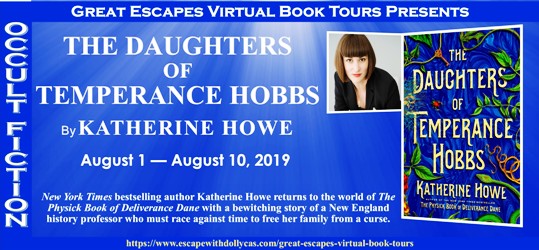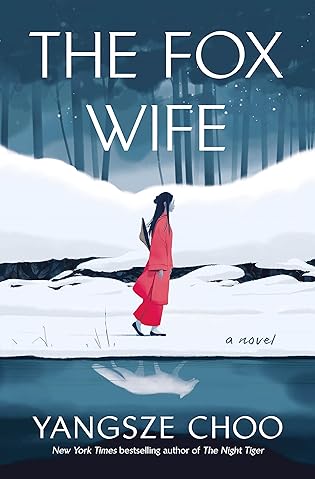 The Fox Wife by Yangsze Choo
The Fox Wife by Yangsze Choo Format: eARC
Source: supplied by publisher via Edelweiss
Formats available: hardcover, ebook, audiobook
Genres: fantasy mystery, historical fantasy, magical realism
Pages: 390
Published by Henry Holt and Co. on February 13, 2024
Purchasing Info: Author's Website, Publisher's Website, Amazon, Barnes & Noble, Kobo, Bookshop.org, Better World Books
Goodreads
Some people think foxes are similar to ghosts because we go around collecting qi, or life force, but nothing could be further than the truth. We are living creatures, just like you, only usually better looking . . .
Manchuria, 1908.
A young woman is found frozen in the snow. Her death is clouded by rumors of foxes involved, which are believed to lure people by transforming themselves into beautiful women and men. Bao, a detective with a reputation for sniffing out the truth, is hired to uncover the dead woman’s identity. Since childhood, Bao has been intrigued by the fox gods, yet they’ve remained tantalizingly out of reach. Until, perhaps, now.
Meanwhile, a family that owns a famous Chinese medicine shop can cure ailments, but not the curse that afflicts them―their eldest sons die before their twenty-fourth birthdays. Now the only grandson of the family is twenty-three. When a mysterious woman enters their household, their luck seems to change. Or does it? Is their new servant a simple young woman from the north or a fox spirit bent on her own revenge?
New York Times bestselling author Yangsze Choo brilliantly explores a world of mortals and spirits, humans and beasts, and their dazzling intersection. The Fox Wife is a stunning novel about a winter full of mysterious deaths, a mother seeking revenge, and old folktales that may very well be true.
My Review:
A hint of historical fantasy, a touch of magical realism, more than a soupçon of fantasy mystery, wrapped in a surprisingly lovely tissue of love lost and found. I wasn’t expecting all of those elements in The Fox Wife, but the twists and turns from one to another and back again kept me enthralled every step of this journey’s way.
The fox spirit Snow is searching for the man responsible for the death of her cub. Bao, a detective/fixer/spy, is looking for foxes. Or rather, he’s hunting for fox spirits around the edges of the other, more practical things and people he generally looks for. In this particular case, the identity of a nameless young courtesan frozen to death behind a popular eatery. And the location of a young would-be concubine missing from a rich man’s keeping, a woman he claims is his wife-to-be, who he also claims to be possessed by a fox.
Although much of the story is told from Snow’s perspective, as a fox she’s more than a bit of an unreliable narrator. Which isn’t helped at all by the fact that she’s lying to herself even more than she is to the reader. There are things she doesn’t want to face, so she’s not – not even when they are right in her face.
Bao, on the other hand, has reached a point in his life where he’s mostly honest with himself, about both his past AND his present. At least the parts of his past where other people have been honest with him.
Which doesn’t mean that there isn’t a blank spot in his narrative as well, but where Snow knows what happened and doesn’t want to even think about it, Bao doesn’t know all of the foundational elements of his story, so keeps poking at a void that he doesn’t have the filling for.
From one perspective, this is a revenge story – or at least Snow thinks it is. Her cub is dead because a photographer was paying for a fox cub to photograph. She’s following the trail of the photographer as all sorts of roadblocks, past and present, internal and external, get in her somewhat meandering way.
Bao is following the trail of a missing person. He’s doing his job. That his job is to find Snow is something he circles towards even as Snow herself gets closer to him and to her own quest. But neither of them is in pursuit of what they believed they were. And once they figure THAT out, they each find what they were truly seeking all along.
Which was never, ever, truly each other.
Escape Rating A-: The Fox Wife is a story at an inflection point, and it manages to blend in aspects of so many genres because it takes place on the cusps of so many changes – not just for its characters but for the world in which it is set.
The story itself is at the crossroads between the numinous and the mundane, as embodied in the two narratives, the literal ‘fox wife’ Snow and the pragmatic detective, who is old enough to have a foot in both camps, as his life was influenced by magic in his childhood, at a time when beliefs in the other were still very much present.
A time that has passed, as the story takes place in China at the end of the Qing Dynasty, just as the last emperor was crowned in 1908 and World War I is looming on the horizon. The remoter places where magic still had sway, such as the places where the foxes lived, are diminishing as technology conquers magic or at least the belief in it, whether literally or figuratively.
Part of that inflection is that the two narratives, Snow’s and Bao’s, follow different paths and operate at different paces. Snow meanders, where Bao mostly follows mystery conventions – at least in his actions – even if his thoughts occasionally wander to his own past.
Which gave this reader a bit of a conflicting reaction, as I was both absolutely riveted AND wished there’d been a bit more editing to cut down on the meandering. I loved the story but I’d have loved it a bit more if it had been about 50 pages shorter. Your reading mileage may vary.
(Honestly, I know which character I’d cut to get those 50 pages down.)
What brought the whole story full circle, for all of its many, many circles, was the way that Snow’s past and Bao’s past eventually intersected in the present, but not in any of the ways that these kinds of quasi-myths often do.
Instead, they intersect in a way that fits them both into the present they are actually living in, in ways that would work with magic or without. Because just as Snow owns her own past and her own responsibility for the tragedies she has tried so hard not to face, Bao finds his way back to the best of his, in the present that he has, and finds his way to the future that he’s always desired but was never able to admit.
Which resolved the two halves of this story into one surprisingly harmonious whole.

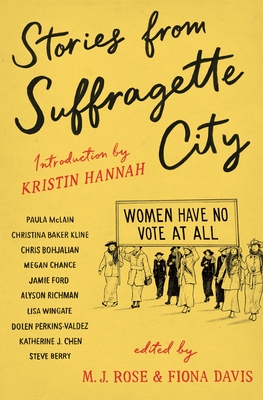 Stories from Suffragette City by
Stories from Suffragette City by 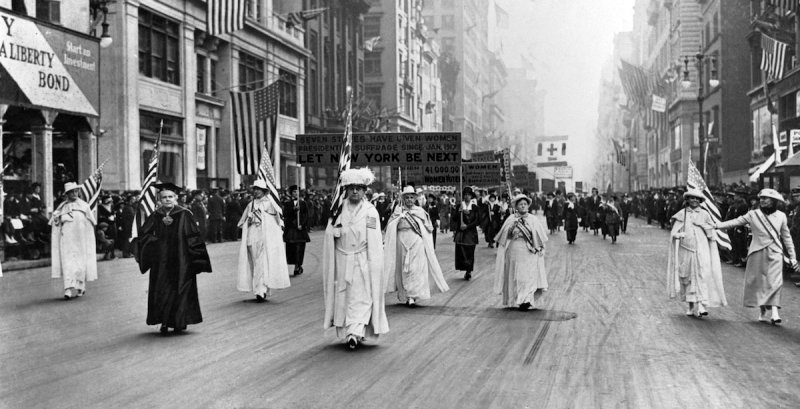
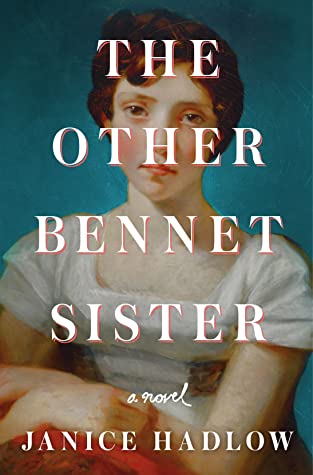 The Other Bennet Sister by
The Other Bennet Sister by 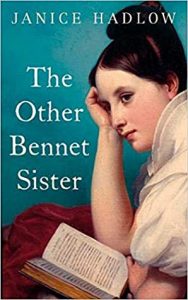
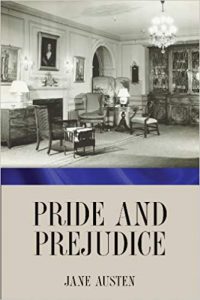 Escape Rating A-: In the end, I enjoyed The Other Bennet Sister considerably more than I expected to at the beginning. I’ve read Pride and Prejudice, but I’m not a fan or an aficionado. I found Mrs. Bennet in particular to be utterly appalling as a character, and Caroline Bingley and Catherine de Bourgh are not people I’d ever want to spend much time with. Certainly not enough time to ever attempt a reread of the book.
Escape Rating A-: In the end, I enjoyed The Other Bennet Sister considerably more than I expected to at the beginning. I’ve read Pride and Prejudice, but I’m not a fan or an aficionado. I found Mrs. Bennet in particular to be utterly appalling as a character, and Caroline Bingley and Catherine de Bourgh are not people I’d ever want to spend much time with. Certainly not enough time to ever attempt a reread of the book.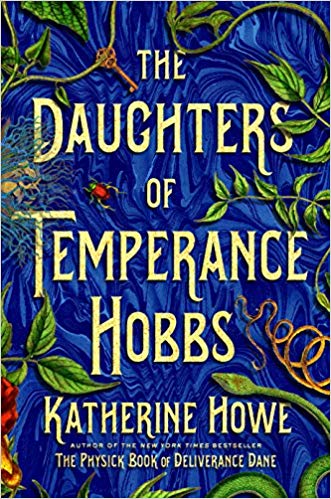 The Daughters of Temperance Hobbs by
The Daughters of Temperance Hobbs by 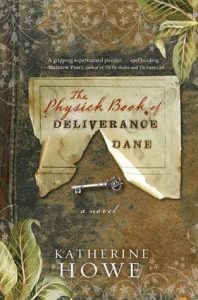 Escape Rating A-: I did read
Escape Rating A-: I did read 